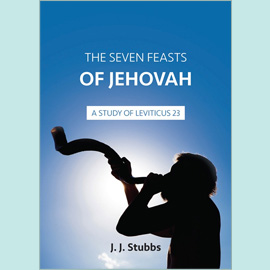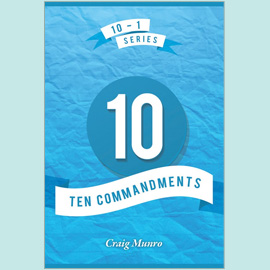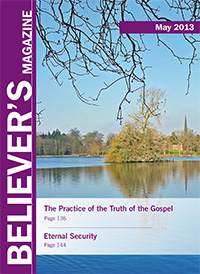Introduction
The main component of the Roman military establishment in New Testament days was the legion. Each legion, at full strength, including combatants and non-combatants, was made up of about 6,000 legionaries (all Roman citizens), along with around 120 mounted troops (cavalry). In New Testament times there were in total about 25 such legions deployed around the Roman Empire. A legion was commanded by a legate, the equivalent of one of our generals commanding a division. Beneath the legate were six tribunes, akin to our colonels, e.g., Claudius Lysias (Acts 23.26). A legion was made up of ten cohorts (bands, AV), each of which was further divided into six centuries of around eighty to one hundred soldiers each of which was in turn commanded by a centurion. There were many categories of centurions, ranging from the most junior to the most senior, see Acts 23.17,23, and they were something like today’s company commanders - captains or majors - and were normally promoted "from the ranks" of ordinary soldiers.
Although we speak about "Roman" soldiers, we must not think that all the soldiers we read about in the Gospels were actually from Rome, nor even Roman citizens from anywhere else in the Empire. (At that time only about 10% of the population of the Roman Empire were Roman citizens.) Interestingly, the phrase "Roman soldier(s)" is never found in the Bible. In the Jewish lands of interest to us in our exploring the situation in the Gospels, many of the soldiers mentioned were auxiliaries, i.e., non-Roman-citizen troops recruited from either the Jewish lands themselves, or else countries around about such as Samaria and Syria – although usually under the command of senior officers who were Roman citizens. These non-citizen mercenary soldiers, if they put in a full term of service (25 years), could afterwards become Roman citizens and were allowed to settle in colonies such as Philippi, as army veterans. Later, in Acts 10.1, we do read about the Italian band, and then in Philippians 1.13, RV, the Praetorian Guard, the emperor’s personal body-guard, both of which were made up exclusively of Roman citizens from Italy.
Jews were exempt from compulsory military service for the Romans, because they were not allowed to carry weapons on the Sabbath, and because soldiers were expected to take part in pagan religious ceremonies such as emperor worship. However, it is known that some Jews did join armies of the area. However they would, no doubt, be classed with the hated Jewish tax collectors!
Local deployment of troops
As far as the Romans were concerned, the Jewish lands were not very important, the major country in the region for them being Syria to the north (see Luke 2.2). Therefore the greatest concentration of their military power was based there and from time to time, when civil unrest erupted in Judæa, legions were brought down from Syria to quell the disturbances. (Although actual legions were not present in Palestine, the use of the word "legion" to denote a large number was well known, as seen in Matthew 26.53, referring to angels, and Mark 5.9,15 and Luke 8. 30, referring to demons.)
Pontius Pilate as the Roman governor of Judæa was in command of (probably) auxiliary soldiers stationed regularly in Cæsarea (Pilate’s normal residence, cp. Acts 23.23-24) and Jerusalem (based at the Tower of Antonia), and temporarily anywhere else that might require a military presence. He had about 3,000 soldiers at his command, of which one cohort, about 600 soldiers, were stationed at Jerusalem and commanded by a tribune. (Later, Acts 21 mentions "a chief captain" – a tribune - and at least two centurions at Jerusalem.) Puppet rulers such as Herod (Lk 3.1) were also allowed to have their own armies made up of soldiers recruited locally or from surrounding countries (Lk 23.11).
Lastly, the high priest – and hence the Sanhedrin of which he was head - had his own Jewish troops in Jerusalem, mostly made up of Levites. These primarily had a policing responsibility with regard to the Temple and its environs, and they are often referred to in the AV as "officers" (mostly in John’s Gospel) and were under the command of "the captain of the temple" (Acts 4.1; 5.24).
Actual examples of soldiers
As we have seen, it is quite possible that the soldiers who came to John the Baptist were, like the despised tax-collectors, themselves Jews, who could have been serving in Herod’s army. After their repentance and baptism they "likewise demanded of him, saying, And what shall we do?", and were told – "Do violence to no man, neither accuse any falsely; and be content with your wages" (Lk 3.14).
Both Matthew and Luke report the healing of a centurion’s servant at Capernaum and Jesus’ statement that this Gentile soldier had shown great faith, not seen among his fellow Jews (Mt 8.5–13; Lk 7.2–10). Note, however, that this Gentile centurion was probably one of Herod Antipas’ mercenaries serving in his army, not a Roman soldier. However, Herod’s army would probably be modelled along Roman military lines, so its officers would have been called centurions.
The soldiers involved in seizing the Lord Jesus in the garden of Gethsemane were probably a mixture of the Roman governor’s troops and those under the control of the Jewish authorities (see John 18.3-12), hence we read about a band of soldiers (probably those on duty at the time, part - but not all - of the 600-strong Jerusalem cohort) and its captain, accompanied by Jewish officers of the Sanhedrin’s police, at that point under orders from "the chief priests and Pharisees" (v.3), but compare John 7.32, 45-46. These officers are also mentioned later in John 18.22; 19.6.
King Herod (Antipas) of Galilee and Perea was in Jerusalem at the time of the Lord Jesus’ arrest for the feast of the Passover and had his military bodyguard with him; he and they joined Pilate’s soldiers in belittling and beating the Lord Jesus (Mt 27.27–31; Lk 23.11–12), having their cruel sport at His expense.
Once the Roman governor Pontius Pilate had condemned the Lord Jesus to be crucified, his soldiers led Him off to Calvary. On the way it was they who "found a man of Cyrene, Simon by name: him they compelled to bear his cross" (Mt 27.32). At Calvary the soldiers continued to mock Him, offering him vinegar (Lk 23.36). The soldiers were unwittingly fulfilling Old Testament prophetic Scriptures - "They parted my raiment among them, and for my vesture they did cast lots" (Jn 19.24); "A bone of him shall not be broken" (v.36), and "They shall look on him whom they pierced" (v.37).
One of the centurions stationed in Jerusalem presided over the crucifixion of the Lord Jesus and we read about him standing facing the cross. When he saw the earthquake, and "those things that were done, [he] feared greatly, saying, Truly this was the Son of God" (Mt 27.54; Mt 15.39), and Luke adds, "he glorified God, saying, Certainly this was a righteous man" (Lk 23.47). When requested, he confirmed the early death of the Lord Jesus to Pontius Pilate (Mk 15.44-45). This tough, mature military man was quite affected by what he saw and heard, and "feared greatly".
The chief priests and Pharisees, fearing that the disciples would steal the body of the Lord Jesus, asked Pilate for soldiers for three days to guard the tomb. He told them to "take a guard" of soldiers (Mt 27.65, RV margin). The watch (sentries) was set and the stone sealed with a Roman imperial seal, thus, as best they could, securing the tomb: of course all was in vain, because after the resurrection, "for fear of him [the angel of the Lord] the keepers did shake, and became as dead men" (Mt 28.4), and the stone rolled away (Mk 16.4). The Jewish elders later generously bribed the recovered guards and promised to smooth things over with Pilate (Mt 28.11–15), getting them to say dishonestly and foolishly, "His disciples came by night, and stole him away while we slept" (Mt. 28.13).
Although ordinary soldiers are portrayed as crude, cruel men, the centurions mentioned in the Gospels are shown to have a proper regard for the Lord Jesus.
To be continued.









